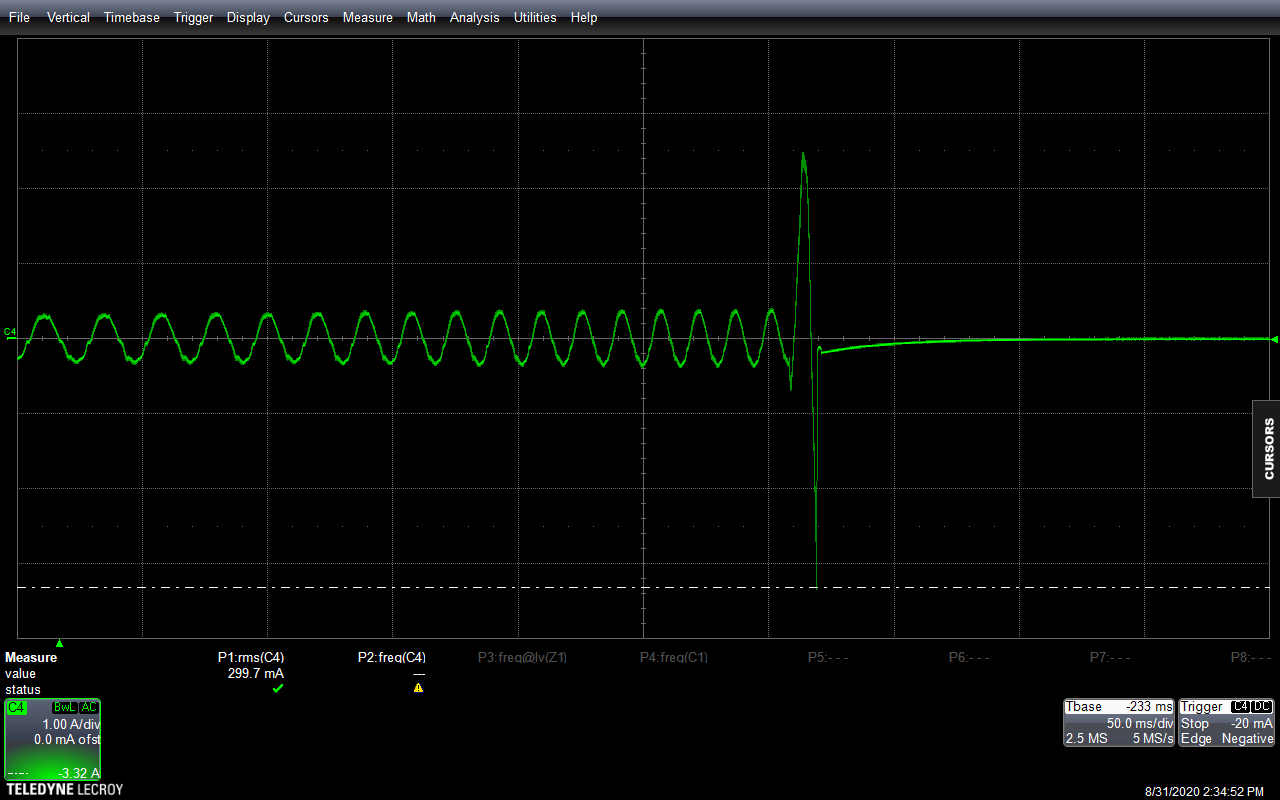SLLU363 may 2023 MCF8315A
- 1
- Abstract
- Trademarks
- 1Introduction
- 2Essential Controls
-
3Basic Controls
- 3.1 Device and Pin Configuration
- 3.2 System Level Configuration
- 3.3
Control Configurations
- 3.3.1 Motor Parameter Estimation to Minimize Motor Parameter Variation Effects
- 3.3.2 Initial Speed Detection of the Motor for Reliable Motor Resynchronization
- 3.3.3 Unidirectional Motor Drive Detecting Backward Spin
- 3.3.4 Preventing Back Spin of Rotor During Startup
- 3.3.5 Faster Startup Timing
- 3.3.6 Gradual and Smooth Start up Motion
- 3.3.7 Improving Speed Regulation
- 3.3.8 Stopping Motor Quickly
- 3.3.9 Preventing Supply Voltage Overshoot During Motor Stop.
- 3.3.10 Protecting Against Rotor Lock or Stall Condition
- 3.3.11 Maximizing Thermal Efficiency and Increasing Thermal Performance
- 3.3.12 Mitigating Electromagnetic Interference (EMI)
- 3.3.13 Faster deceleration
2.6.5 Hardware lock Current Limit [HW_LOCK_LIMIT]
This fault gets triggered when there is a spike in the phase current due to short circuit as shown in Figure 2-5. Short circuit can be due to phase to phase, phase to GND or Vm to GND short. Another reason to trigger this fault is incorrect speed loop and current loop PI controller gains.
 Figure 2-5 Phase Current Waveform Showing
a Spike due to Short Circuit
Figure 2-5 Phase Current Waveform Showing
a Spike due to Short CircuitStep 1: Program Speed loop Kp [SPD_LOOP_KP], Speed loop Ki [SPD_LOOP_KI], current loop Kp [CURR_LOOP_KP] and current loop Ki [CURR_LOOP_KI] to zero. This enables auto calculation of speed loop and current loop PI controller gains.
Step 2: If the fault still persists, check the continuity across phase to phase, phase to GND or Vm to GND to make sure there is no short across these terminals.